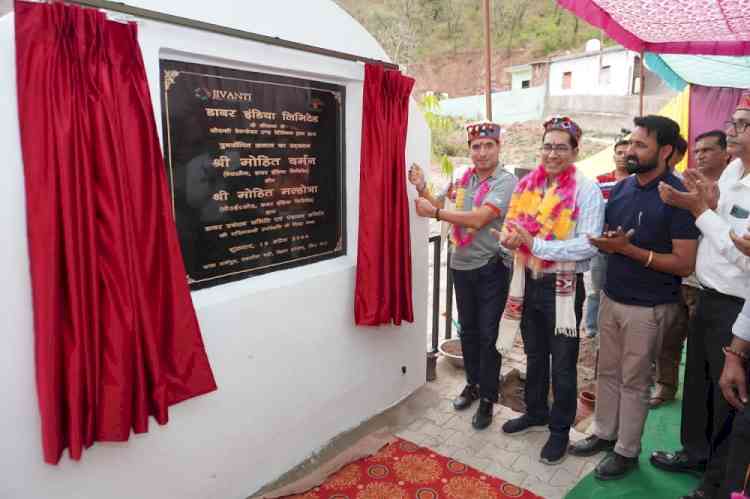Backache and a guide to healthy spine
Author(s): Dr Noel SinghThe Last week has been celebrated as the” Spinehealth week” and it is very important to care for our spine. As we get older, it is common to have increased aches, pains and joint stiffness.When it comes to the spine,...


The Last week has been celebrated as the” Spinehealth week” and it is very important to care for our spine. As we get older, it is common to have increased aches, pains and joint stiffness.When it comes to the spine, some decline in function and flexibility may be expected as the bones and intervertebral disks begin to deteriorate over time.
There can be various sources of Back pain. Common pain generators include back pain arising from various different sources which include the para spinal muscles and ligaments around the spine causing back muscle sprains and strains. Other sources include pain arising from the facet joints due to arthritis, back pain from degenerated discs, instability, vertebral fractures, bone tumour’s and leg pain due to radiculopathy secondary to disc prolapse. Here’s what you should know about what happens to your spine as you age, common spinal conditions in older adults, and ways to help prevent back pain and injuries in the future
Degeneration of Disc and Lumbar canal stenosis is part of normal aging process.
The spine is subject to everyday stress that eventually wears down its structures over time. Specifically, the disks that act as shock absorbers between the spine’s vertebrae begin to shrink and the disc loses its water content. As a result, the vertebral bones begin to rub against one another, potentially causing back pain and stiffness.Also, with age the spinal canal becomes narrower, which eventually causes compression of spinal cord and the nerves, leading to radiating pain down the legs (Claudication).
Facet joint osteoarthritis is osteoarthritis involving the facet joints. Patients present with low back pain and stiffness that seems worse in the morning and at the end of the day, as well as after extended periods of physical activity. Typically facetal pain presents as a “catch”when extending the back.
Lumbar spinal stenosis is a narrowing of the spinal canal that occurs in the lower back, resulting in low back and leg pain that characteristically occurs while standing or walking more than a short distance but dissipates once you sit down or lean forward(Neurogenic Claudication). Pain associated with this condition can be moderate to severe and may also occur with symptoms of sciatica including tingling and numbness in the buttocks and legs.
Degenerative spondylolisthesis may cause similar symptoms to those associated with Lumbar Canal stenosis and is primarily seen in patients aged 65 and older. It occurs when weakened facet joints, ligaments and bones allow a vertebra to “slip” forward so that it is out of alignment with the vertebra below it. When an older person experiences lower back and/or leg pain that lessens while sitting and worsens when standing upright, plus a loss of flexibility in the lower back and pain while bending backwards, degenerative spondylolisthesis may be the reason.
Compression fractures are another spinal injury that can occur as part of the aging process, especially in those with poor bone strength due to osteoporosis. Such fractures may cause a vertebral bone to partially collapse, losing part of its height. They most often occur in the thoracic and upper lumbar portions of the spine and are typically accompanied by sudden and severe back pain, spinal deformity, loss of height and an inability to participate in routine physical exercise.
It’s is very important that we know that back and neck pain as a result of ageing can be effectively treated with lifestyle modifications, ergonomic and posture training and muscle strengthening exercises.
While not all back pain can be avoided, the time to start protecting yourself against preventable spine problems when you are older is now. This starts with exercising regularly to keep off excess weight and strengthen the core muscles in your back and abdomen. You can do so with targeted stretches as well as safe aerobic activity such as walking, bicycling, swimming and yoga.
Meanwhile, one must be mindful of your posture at all times – especially while seated at your desk at work. Make needed adjustments to your chair and computer screen, make sure you have the proper lumbar support, and stretch and warm your muscles before any physical activity. You should also avoid lifting heavy objects by yourself whenever possible, and always use correct bending, twisting and lifting techniques. See below for details on these and other methods you can employ to decrease your likelihood of experiencing chronic back pain as you age:
• Strengthen your core muscles via targeted exercises including aerobics, flexion (bending forward) and extension (bending backward) stretches.
• Must make sure that the ergonomics at your work place are correct.
• Avoid lifting objects that are heavier than 25% of your own body weight.
• Eat a balanced diet that includes anti-inflammatory foodsand vitamin D to keep your bones strong.
• Quit Smoking.
• Consider buying a better, more supportive mattress or trying a new sleeping position if you have trouble with your back in the morning..
• Yoga and meditation can be helpful in relieving stress related aches and pains.
• Depression can play a significant role in back pain, consult a counsellor/ psychologist/ psychiatrist.
• Be practical about your exercise routineand avoid overdoing it with repetitive movements that can lead to muscle strains and sprains.
Beware of the following warning signs:
• Pain not getting relieved with rest
• Pain that is present throughout the day and doesn’t let you sleep
• Recurring back pain
• Pain not relieved with routine analgesics
• Pain associated with constitutional symptoms such as weight loss, night sweats, decreased appetite
• Sudden onset back pain associated with weakness of lower limb.
• Bladder/ bowel disturbance associated with backache
• If you suffer from chronic back pain or any of the above warning signs, consult a spine specialist like to learn the cause and best treatment options available while avoiding further injury. Remember that recurring and debilitating back pain is never normal and can be mitigated with the right assistance.--
(The Author Dr. Noel Singh is Spine Surgeon, Christian Medical College, Ludhiana.)

 cityairnews
cityairnews 
















